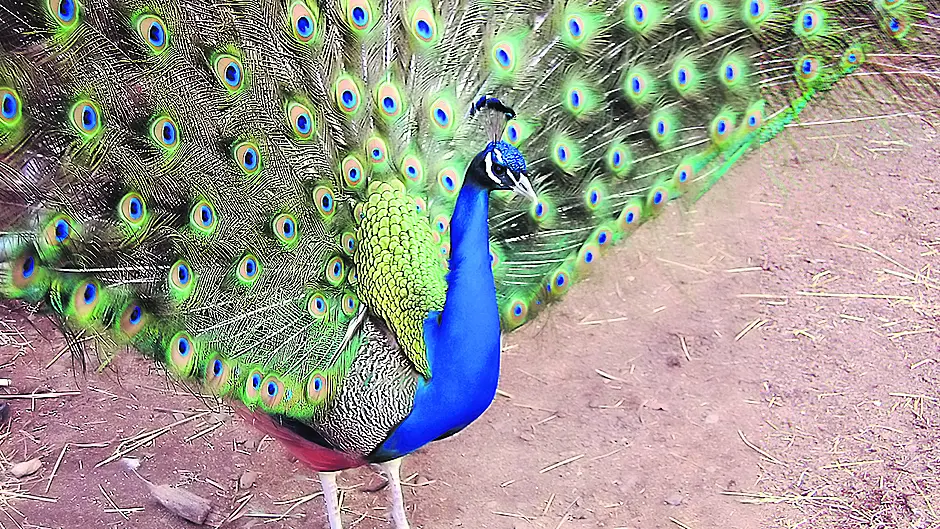LIKE many others, I developed back problems when working from home during the ‘lockdown years’, and have consequently seen many images of my own spine. While the surgeon was outlining my spinal defects on the latest MRI scan, I found myself fascinated by its structure and what it tells us about the evolution of our species.
Our spinal makeup reveals, for example, that humans were once tailed creatures. The coccyx, a series of bones at its base, represents a vestigial tail, hence its common name, the ‘tailbone’. This got me thinking about animal tails in general, and what we are missing out on by no longer having one.
For a tail is a very useful tool. It’s utilitised by other animals for a variety of purposes – in display and courtship rituals; for warmth; to help in flight and balance; as an insect swat; and aquatic mammals use theirs for steering and propulsion too. And these functional appendages come in a vast array of shapes and sizes throughout the animal kingdom.
Extra ‘hands’
Some of our smallest mammals use their tails as ‘extra hands’. A field mouse, for example, uses the tip of its prehensile tail to ascend and descend grain stalks. Shrews also avail of theirs when climbing but utilise them as a hook rather than a rope. And I’ve also seen rats effortlessly skimming up the pole of my bird feeder, their tails wrapped around the pole propelling them upwards to their prize.
Tails are also wonderful balancing tools. Squirrel tails enable them to effortlessly move between high tree branches, their elaborate fluffed up tails acting as effective counterweights in this high-risk environment. So-called ‘flying squirrels’ are the supreme examples of this elegant balancing act.
And such large bushy tails are handy for insulation too, with squirrels and foxes sleeping enfolded in their own warm fur. Even smaller tails can help in this way, for example as is the case with hibernating dormice. Its tiny, thin tail also helps to break up its profile, helping to camouflage the sleeping animal from predator attack.
A bat’s tail has a few purposes. It supports the membrane that extends between a bat’s feet which forms a handy basket for catching or storing its food in flight. It’s also used in steering, and the colugo, or ‘flying lemur’, has a similar tail membrane enabling it to control its direction as it glides. And birds too, of course, also use their flexible tails to maximum effect in flight.
An otter makes use of its tail for both for steering and propulsion, flexing it in time with its undulating body movements and paw strokes. But whales, porpoises and dolphins instead use their flattened fish-like tails in an up-and-down movement, to push their much bigger bodies through the water. The large tails of some other marine species actually help to thrust them out of the water completely, as is the case with ‘flying fish’.
Cattle, horses and donkeys flick away irritating insects with their tails. However, many domesticated animals, such as sheep and pigs, have had their tails docked for ‘hygienic reasons’, thus losing their inherent fly-swats.
Mammals also communicate with their tails. Some are danger alerts, as in the case with rabbits whose tails are white below but dark on top. As they run for cover, these flashing white bottoms offer a clear warning to other rabbits of potential danger.
Fallow deer use their lighter-coloured under-tails for alerts. When a herd is alarmed, they raise their tails to display the maximum area of white, which prompts the herd to bound away. This species also communicates with tails signals in the breeding season, with the bucks holding theirs high to signify their ‘intentions’.
Male foxes, who generally sport poised horizontal tails, curl up their bushy appendages during courtship, flamboyantly displaying them over their backs to the vixen.
And some animal species tails sport scent glands which pass on important information about their sex, reproductive condition and social status, as is the case with foxes and badgers for example.
My tabby cat can also very effectively convey her mood through movements of her dextrous tail. When it’s twitchily swishing, that’s the time to watch out for claws. A lazy pulse means ‘you’re annoying but I can put up with you’, while the straight up tail transmits a ‘happy to see you’.
However, what humans are saying when shaking their ‘tail feathers’ at wedding dances still remains a mystery to me ….
• Contact: [email protected]










